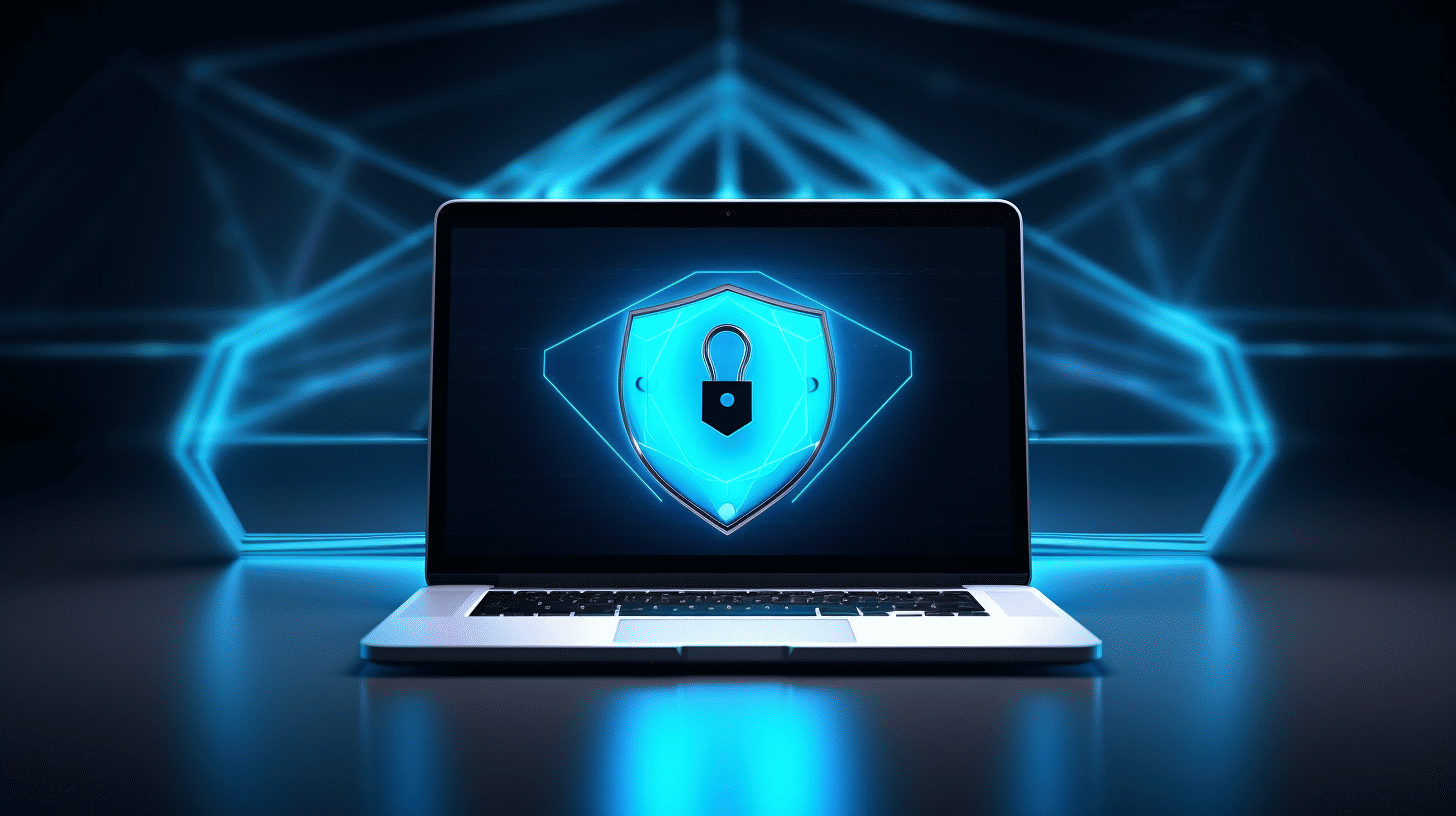在网络威胁日益普遍的世界中,保护您的网站至关重要。随着 WordPress 作为内容管理系统的流行,确保您的 WordPress 网站的安全对于保护您的在线形象至关重要。在本文中,我们将深入探讨 WordPress 安全实践领域,并为您提供增强网站防御能力的基本知识。从了解常见威胁到实施强大的安全措施,我们将涵盖您需要了解的所有内容,以确保您的 WordPress 网站安全可靠。
🔒💻💪
通过遵循本文概述的最佳安全实践,您可以保护宝贵的数据,维护网站的完整性,并为访问者提供安全的浏览体验。所以,让我们一起深入探索 WordPress 安全的世界吧!
了解 WordPress 漏洞
🔒简介:
WordPress 是当今互联网上最受欢迎的内容管理系统 (CMS) 之一,为全球数百万个网站提供支持。然而,它的流行也使它成为黑客和网络犯罪分子的主要目标。在本节中,我们将探讨 WordPress 网站面临的常见威胁,并研究近年来发生的一些值得注意的安全漏洞。
WordPress 网站的常见威胁:
WordPress 漏洞可以通过多种方式利用,从简单的暴力攻击到更复杂的技术。以下是 WordPress 网站所有者应该注意的一些常见威胁:
- 过时的主题和插件:使用过时的主题和插件可能会让您的网站容易受到攻击。开发人员会定期发布更新来修补安全漏洞,因此保持 WordPress 安装、主题和插件为最新版本至关重要。
- 弱密码:许多针对 WordPress 网站的攻击都是由于密码太弱造成的。使用强大且独特的密码可以显著提高网站的安全性。考虑使用密码管理器来生成和存储复杂的密码。
- 文件包含漏洞:文件包含漏洞可让攻击者利用主题或插件中的漏洞在您的网站上执行恶意代码。定期更新您的主题和插件,以防范此类攻击。
- 暴力攻击:暴力攻击包括系统地尝试大量用户名和密码组合,直到找到正确的组合。实施强登录凭据并限制登录尝试次数有助于防止暴力攻击。
- 跨站点脚本 (XSS):XSS 攻击涉及将恶意代码注入网站,然后由毫无戒心的用户执行。为了防止 XSS 攻击,请确保您的主题和插件是安全的、清理用户输入并使用输出转义技术。
- SQL 注入:SQL 注入攻击针对的是未正确清理用户输入的易受攻击的 WordPress 插件或主题。保持插件和主题更新并使用安全插件可以帮助降低 SQL 注入攻击的风险。
- 网络钓鱼尝试:网络钓鱼企图包括诱骗用户泄露敏感信息,例如用户名、密码或信用卡详细信息。教育您自己和您的网站用户如何识别和避免成为网络钓鱼诈骗的受害者。
近年来值得注意的 WordPress 安全漏洞:
虽然 WordPress 正在不断改进其安全措施,但还是发生了几起值得注意的安全漏洞,凸显了保持警惕和主动性的重要性:
- 巴拿马文件泄露:2016 年,巴拿马文件泄露事件曝光了莫萨克·冯赛卡(一家巴拿马律师事务所)的机密文件,最初被认为是该律师事务所 WordPress 网站上使用的 Revolution Slider 插件版本过旧所致。
- SoakSoak 恶意软件:2014 年,SoakSoak 恶意软件利用流行的第三方插件 Slider Revolution 中的漏洞感染了超过 100,000 个 WordPress 网站。
- 针对 WordPress.com 的 DDoS 攻击:2013 年,WordPress.com 遭受大规模分布式拒绝服务 (DDoS) 攻击,导致数百万用户暂时无法访问该网站。
💡 值得注意的是,这些安全漏洞并不一定表明 WordPress 本身存在固有缺陷。相反,它们提醒网站所有者必须勤勉维护和保护其 WordPress 安装、主题和插件。
通过了解 WordPress 网站面临的常见威胁并从过去的安全漏洞中吸取教训,您可以采取主动措施来保护您的网站并确保安全的在线状态。随时了解最新的安全最佳实践并实施强大的安全措施,以保护您的 WordPress 网站免受潜在漏洞和攻击。
奠定坚实基础:WordPress 核心安全
在广阔且不断变化的网站安全世界中,确保您的 WordPress 网站的安全至关重要。采取措施保护 WordPress 安装的核心不仅可以让您高枕无忧,而且还有助于保护您的数据、声誉和访问者的体验。在本文中,我们将探讨您可以采取的一些基本措施,为您的 WordPress 核心安全奠定坚实的基础。
定期更新和补丁
🔧 保持 WordPress 安装为最新对于维护安全的网站至关重要,因为更新通常包含重要的安全修复和改进。以下是定期更新时需要记住的几个关键点:
- WordPress 核心更新:保持警惕并留意 WordPress 团队发布的任何新更新。确保及时更新您的核心 WordPress 安装,以便从最新的安全增强功能和错误修复中受益。
- 插件和主题更新:除了核心更新之外,关注插件和主题更新也同样重要。通过定期更新这些组件,您可以确保修补所有漏洞,从而降低漏洞被利用的风险。
文件和数据权限
🗃️ 正确配置文件和数据权限是 WordPress 核心安全的一个重要方面。通过设置适当的权限,您可以控制对服务器上敏感文件的访问。以下是一些需要考虑的最佳做法:
- 文件权限:根据最小权限原则配置文件权限。这意味着为每个文件或目录提供所需的最低访问级别。通常,目录应具有 755 权限,文件应具有 644 权限。
- 数据库安全:确保分配给 WordPress 安装的数据库用户拥有正常运行所需的最少权限,从而保护您的数据库。避免使用数据库的默认“admin”用户名,并选择强密码以防止未经授权的访问。
使用安全连接
🔒 确保网站访问者和 WordPress 网站之间的连接安全至关重要。加密双方之间传输的数据有助于保护敏感信息免遭拦截和篡改。以下是需要实施的两项关键安全措施:
- SSL/TLS 证书:为您的 WordPress 网站获取并安装 SSL/TLS 证书,以便通过 HTTPS 建立安全连接。这不仅为您的访问者提供了更安全的浏览体验,而且还提高了您网站的可信度。
- 安全登录:采取措施保护 WordPress 管理面板的登录过程。这包括启用双因素身份验证、实施强密码策略以及限制登录尝试以防止暴力攻击。
通过定期更新 WordPress 安装、设置适当的文件和数据权限以及使用安全连接,您可以为 WordPress 核心安全奠定坚实的基础。请记住,保护网站安全是一个持续的过程,因此,了解最新的安全实践并做出相应调整至关重要。
掌控:管理员安全实践
在当今的数字环境中,保护敏感数据和维护网络安全至关重要。管理员在确保系统和信息的安全性和完整性方面发挥着至关重要的作用。通过实施强大的安全实践,这些管理员可以增强对潜在威胁的防御能力。本文将探讨可帮助管理员控制安全性的三种关键实践:更强大的密码策略、双因素身份验证以及限制用户访问和权限。
更强的密码策略
密码通常是防止未经授权访问的第一道防线。不幸的是,弱密码仍然是许多组织的一个重大漏洞。为了解决这个问题,管理员应该实施更严格的密码策略。以下是一些需要考虑的基本准则:
- 混合使用大写和小写字母、数字和特殊字符。
- 设置最小密码长度要求。
- 定期强制密码过期并要求用户创建新密码。
- 教育用户创建独特、复杂的密码的重要性,并不要使用容易猜到的选项,如生日或常用词。
通过实施这些措施,管理员可以显著降低暴力攻击和未经授权访问成功的可能性。
双重身份验证
双重身份验证 (2FA) 是一种强大的安全措施,可为用户帐户增加一层额外的保护。使用 2FA,用户需要提供两种不同的身份验证形式才能访问其帐户,例如密码和发送到其移动设备的唯一代码。这一额外步骤使攻击者更难获得未经授权的访问权限,即使他们设法获取了用户的密码。
实施 2FA 可以帮助管理员降低密码被盗或泄露的风险。通过要求使用额外的验证方法(例如移动应用程序或硬件令牌),管理员可以显著增强系统的安全性。
限制用户访问和权限
仅向用户授予其所需的访问权限和特权是维护网络安全的关键做法。管理员应仔细评估每个用户的角色和职责,并相应地授予适当的访问权限级别。以下是限制用户访问权限和特权的一些关键策略:
- 实施最小特权原则 (PoLP),确保用户拥有有效执行任务所需的最小访问权限。
- 定期审查和更新用户权限以反映职责或工作角色的变化。
- 监控和审核用户活动以识别任何未经授权或可疑的活动。
通过实施这些措施,管理员可以最大限度地减少内部威胁和未经授权的访问的潜在影响。
🔒 请记住,网络安全的强弱取决于您实施的措施。通过实施更严格的密码策略、实施双因素身份验证以及限制用户访问和权限,管理员可以控制其网络安全。保护敏感数据是一场持久战,但只要采取正确的措施,您就可以显著降低未经授权的访问或数据泄露的风险。保持警惕,并在每一步都优先考虑安全性。
使用 WordPress 插件增强安全性
在不断发展的网络安全世界中,采取主动措施保护您的 WordPress 网站至关重要。增强网站安全性的一种有效方法是使用专门设计用于解决安全漏洞的 WordPress 插件。由于有大量插件可用,因此了解如何评估和选择适合您网站需求的插件非常重要。在本文中,我们将探讨评估插件安全性的重要性,重点介绍一些最安全的 WordPress 安全插件,并强调定期插件管理和更新的重要性。
理解并评估插件安全性
在选择 WordPress 插件时,安全性应是首要考虑的标准。以下是评估插件安全性时需要考虑的一些基本提示:
- 检查插件兼容性和评级:在安装任何插件之前,请先检查它与您的 WordPress 版本的兼容性,并考虑其总体评分和其他用户的评价。
- 调查开发商:研究插件开发者的声誉和业绩记录。寻找有积极维护和更新插件历史的开发者,因为这表明他们对安全性和性能的承诺。
- 审查漏洞披露:随时了解与特定插件相关的任何已知漏洞。检查开发人员已确认并及时解决的任何已报告的安全问题或漏洞。
- 考虑主动支持和更新:寻找定期更新并得到开发者社区积极支持的插件。频繁更新是插件得到积极维护以应对新出现的安全威胁的良好指标。
- 检查用户反馈:花时间阅读用户反馈,特别注意任何提及安全问题或问题的内容。寻找在安全性能方面持续获得积极反馈的插件。
最安全的 WordPress 安全插件
虽然有许多可用的安全插件,但重要的是选择信誉良好且已被证明能够有效保护 WordPress 网站的插件。一些可用的顶级安全插件包括:
这些插件提供一系列安全功能,例如防火墙保护、恶意软件扫描、登录安全和文件完整性监控。它们不断更新以应对新出现的威胁,使其成为增强网站安全性的可靠选择。
定期管理和更新插件
为了持续维护网站的安全性,定期管理和更新插件至关重要。以下是一些需要牢记的最佳做法:
- 保持插件更新:始终确保您正在运行已安装插件的最新版本。开发人员经常发布更新以解决安全漏洞并提高性能。
- 删除未使用的插件:如果您有任何不再需要或不再使用的插件,请考虑将其全部删除。如果置之不理,未使用的插件可能会成为潜在的安全风险。
- 备份您的网站:定期备份您的 WordPress 网站,以便在插件更新或安装期间出现任何安全漏洞或意外问题时有一个还原点。
- 保持知情:随时了解 WordPress 社区的最新安全趋势和新闻。订阅安全博客、论坛或新闻通讯,及时了解任何潜在漏洞或推荐的安全措施。
通过遵循这些最佳实践,您可以降低风险并为您的 WordPress 网站维持强大的安全态势。
请记住,保护您的 WordPress 网站需要采取主动的方法。通过了解和评估插件安全性、选择信誉良好的安全插件并定期管理和更新它们,您可以增强网站的安全性并保护其免受潜在威胁。
确保服务器环境安全
在当今的数字环境中,确保服务器环境的安全至关重要。随着网络威胁变得越来越复杂,有必要采取主动措施保护您的服务器免受未经授权的访问、数据泄露和其他恶意活动的侵害。在本节中,我们将探讨一些有效的方法来保护您的服务器环境并确保您的数据安全。
配置 .htaccess 以增强安全性
.htaccess 文件是 Apache Web 服务器用来控制网站行为的配置文件。它允许您设置访问网站的规则和限制,在保护服务器环境方面发挥着至关重要的作用。以下是配置 .htaccess 文件以增强安全性的一些技巧:
- 禁用目录列表:默认情况下,Apache 允许目录列表,这意味着任何人都可以访问目录的内容。为了防止这种情况,请在 .htaccess 文件中添加以下行:
期权-指数- 保护敏感文件:如果您的服务器上有包含敏感信息的文件(例如数据库配置文件),则必须保护它们免受公共访问。您可以在 .htaccess 文件中使用以下代码片段来限制对特定文件的访问:
命令允许,拒绝 全部拒绝
- 阻止对特定 IP 地址的访问:如果您发现特定 IP 地址存在可疑活动,则可以阻止它们访问您的服务器。将以下代码添加到您的 .htaccess 文件中,将“xxx.xxx.xxx.xxx”替换为您要阻止的 IP 地址:
命令拒绝,允许拒绝来自 xxx.xxx.xxx.xxx
安全套接字层 (SSL) 实施
在服务器上实施 SSL(安全套接字层)对于确保网站与用户之间的通信安全至关重要。SSL 会加密通过网络传输的数据,使攻击者几乎不可能拦截和解密。以下是 SSL 实施对于您的服务器环境至关重要的原因:
- 数据加密:SSL 对服务器和用户设备之间交换的数据进行加密,确保登录凭据和信用卡详细信息等敏感信息的安全。
- 身份验证:SSL 证书可验证您网站的身份,在您的服务器和用户浏览器之间建立信任。这有助于防止网络钓鱼攻击并增强您网站访问者的信心。
- 搜索引擎排名:SSL 现在被搜索引擎视为排名因素。拥有 SSL 证书的网站往往在搜索结果中排名较高,从而提高其知名度和可信度。
防火墙和入侵检测系统的使用
防火墙和入侵检测系统 (IDS) 是保护服务器环境免受未经授权的访问和恶意活动侵害的重要工具。这些安全措施如何有助于打造安全的服务器环境:
- 防火墙:防火墙充当服务器和互联网之间的屏障,监控传入和传出的网络流量。它可以阻止恶意请求,防止 DDoS 攻击,并限制对您的服务器的未经授权的访问。
- 入侵检测系统:IDS 监控网络流量,以发现可疑活动或潜在的安全漏洞。它可以检测异常情况,例如未经授权的访问尝试或异常的网络行为,并触发警报,让您立即采取行动。
实施防火墙和 IDS 的强大组合可以大大增强服务器环境的安全性,并提供针对各种网络威胁的额外保护层。
通过遵循这些最佳实践并实施必要的安全措施,您可以创建一个安全的服务器环境,以保护您的数据并确保您的用户获得顺畅且不间断的在线体验。请记住,网络安全的世界在不断发展,因此请随时了解最新的安全实践,以领先潜在威胁一步。
WordPress 安全和维护
介绍:
在广阔且不断发展的互联网环境中,维护 WordPress 网站的安全至关重要。随着网络威胁的增加,实施安全措施来保护您的网站并保持其完整性至关重要。在本节中,我们将探讨 WordPress 安全性和维护的三个关键方面,这些方面将帮助您保护您的网站并使其保持平稳运行。
定期网站备份
定期备份网站就像为您的宝贵数据和内容提供安全网。它确保即使发生最坏的情况,您也可以快速将网站恢复到以前的状态。以下是定期网站备份至关重要的几个原因:
- 防止数据丢失: 无论是由于黑客攻击、服务器崩溃还是意外删除,数据丢失都可能造成毁灭性的影响。定期备份可让您恢复丢失的信息并让您的网站重新正常运行。
- 安心: 知道您拥有网站的最新备份可以让您高枕无忧。它允许您尝试更改、更新和新插件,而不必担心对您的网站造成不可逆转的损害。
- 更容易的灾难恢复: 如果发生安全漏洞或网站故障,拥有最新备份可以显著减少停机时间。它使您能够快速恢复网站并最大限度地减少对访问者和业务的影响。
为了确保网站无缝备份,您可以考虑使用 WordPress 插件,例如 UpdraftPlus 或 BackupBuddy。这些插件可自动执行备份过程,并允许您将备份安全地存储在 Dropbox 或 Google Drive 等外部平台上。
审计和监控网站活动
定期审核和监控网站活动可以帮助您识别潜在的安全风险并采取主动措施解决这些风险。通过密切关注网站的日志和活动,您可以:
- 检测恶意活动: 监控网站日志可以帮助您识别未经授权的登录尝试、可疑的活动模式或潜在的黑客攻击。通过及早识别这些迹象,您可以采取措施降低风险并保护您的网站。
- 跟踪插件和主题漏洞: 插件和主题在扩展网站功能方面起着至关重要的作用,但它们也可能带来安全漏洞。定期审核它们可确保您及时了解最新版本和补丁,从而减少被利用的机会。
- 发现性能问题: 监控网站活动还可以帮助您识别性能瓶颈,例如加载时间缓慢或服务器错误。通过及时解决这些问题,您可以增强用户体验并最大限度地降低访问者离开网站的风险。
为了简化跟踪过程,您可以使用 Sucuri 或 Wordfence 等安全插件。这些工具提供实时监控和可疑活动警报,让您立即采取行动。
及时安装安全补丁和更新
WordPress 安全性的基本支柱之一是让您的网站及其组件保持最新状态。这包括及时安装 WordPress 核心、主题和插件的安全补丁和更新。以下是它为何如此重要:
- 修复漏洞: 开发人员不断致力于提高安全性并解决任何已发现的漏洞。通过及时更新您的网站,您可以确保拥有最新的安全补丁,从而最大限度地降低被利用的风险。
- 兼容性和性能: 更新通常包括错误修复和性能改进,以确保平稳运行并与其他 WordPress 组件兼容。通过保持更新,您可以受益于增强的功能和更安全的整体系统。
- 确保插件的可靠性: 插件是定制 WordPress 网站的关键资产。然而,过时的插件可能会成为负担,为黑客提供利用漏洞的机会。定期更新可确保您从新功能中受益并使用最安全的版本。
为了随时掌握更新和补丁,请尽可能启用 WordPress 核心、主题和插件的自动更新。利用自动化功能可消除手动更新每个组件的负担,让维护变得轻松无忧。
请记住,通过定期进行网站备份、审核和监控网站活动以及及时更新安全补丁和更新,您可以显著增强 WordPress 网站的安全性和性能。立即采取主动措施,保护您的数字存在免受潜在威胁并确保流畅的用户体验。
结论
总之,确保 WordPress 网站的安全性对于保护其免受潜在威胁和入侵至关重要。通过实施本文概述的基本安全实践,您可以显著增强网站的防御能力,并最大限度地降低未经授权访问或数据泄露的风险。
请记住,这不仅仅是加强网站边界;维护安全需要警惕的监控和定期更新。通过保持主动性并采用最佳实践,您可以保护您的网站并为访问者提供安全的浏览体验。
在 Managed-WP,我们了解网站安全的重要性,这就是我们提供全面的托管 WordPress 云托管平台的原因。我们的专家团队确保基础设施稳健,提供 24/7/365 全天候问题解决支持,并让您可以专注于提供卓越的数字体验。选择 Managed-WP 作为您值得信赖的合作伙伴,简化您网站的安全性。
使用 Managed-WP 控制您网站的安全。 立即注册 体验安全可靠的托管解决方案带来的安心。🚀
常见问题
- 哪些是基本的 WordPress 安全实践?
基本的 WordPress 安全实践包括:1. 保持 WordPress、主题和插件更新,2. 使用强大而独特的密码,3. 安装 WordPress 安全插件,4. 启用双因素身份验证,5. 定期备份您的网站。
- 为什么保持 WordPress 和插件更新很重要?
出于安全考虑,保持 WordPress 和插件更新至关重要。更新通常包含错误修复、补丁和安全增强功能,可保护您的网站免受漏洞和潜在攻击。
- 使用 WordPress 安全插件有什么好处?
WordPress 安全插件为您的网站增加了一层额外的保护。它可以帮助检测和阻止恶意活动、保护登录过程、监控文件更改并提供安全通知和报告。
- 双因素身份验证如何提高 WordPress 的安全性?
双重身份验证为登录过程增加了一个额外步骤,既需要用户知道的信息(密码),也需要用户拥有的信息(例如,发送到他们手机上的代码)。这大大增加了未经授权的用户访问您的 WordPress 仪表板的难度。
- 为什么定期网站备份对 WordPress 安全很重要?
定期网站备份可在出现安全漏洞、数据丢失或网站故障时提供安全保障。如果出现问题,您可以轻松将网站恢复到以前的状态,而不会丢失宝贵的内容和数据。


















